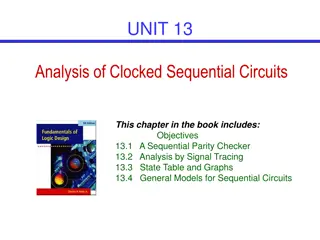Checkers is Solved
Checkers has been weakly solved by Kevin Madison and Emma Drobina, marking a milestone in game theory. Explore the rich history, complexity, and AI advancements behind solving this classic game using forward and backward search techniques.
Download Presentation

Please find below an Image/Link to download the presentation.
The content on the website is provided AS IS for your information and personal use only. It may not be sold, licensed, or shared on other websites without obtaining consent from the author.If you encounter any issues during the download, it is possible that the publisher has removed the file from their server.
You are allowed to download the files provided on this website for personal or commercial use, subject to the condition that they are used lawfully. All files are the property of their respective owners.
The content on the website is provided AS IS for your information and personal use only. It may not be sold, licensed, or shared on other websites without obtaining consent from the author.
E N D
Presentation Transcript
Checkers is Solved By Kevin Madison and Emma Drobina
Solving Games Superhuman playing ability =/= solving Ultraweakly solved - Prove whether the first player will win, lose, or draw from the initial position, given perfect play on both sides. (Often considered the most interesting solution classification as an ultraweak solution requires reasoning about the abstract properties of the game.) Weakly solved - Provide an algorithm that secures a win for one player, or a draw for either, against any possible moves by the opponent, from the beginning of the game. Strongly solved - Provide an algorithm that can produce perfect moves from any position, even if mistakes have already been made on one or both sides. (Brute force approach)
Checkers Checkers has been weakly solved Checkers has 5 x 10^20 positions Most computationally complex game solved to date
Background 1963: First AI victory in checkers 1989: Chinook program began 1992: World champion beat Chinook 1996: Chinook a stronger player than any human
How hard is it to solve a game? Decision complexity Moves require skill Space complexity Search space size
Solving Checkers 1. Endgame databases (backward search) 2.Proof-tree manager (forward search) 3. Proof solver (forward search)
Backward Search The technique used in backward search is retrograde analysis. It works by starting at an end-game position and working toward the start, first enumerating all one-piece positions (a trivial win for the side of the piece) then enumerating all two-piece positions until arriving at a one-piece position with a known value or a repeat position (a draw). The database is comprised of all board positions with <= 10 pieces.
Forward Search 1. Proof-tree manager a. Builds the proof by identifying positions that need assessment b. Maintains the proof as a whole c. Uses Proof Number search algorithm 2.Proof solver a. Searches individual positions b. Evaluates to see if a position is i. Proven ii. Partially proven
Forward Search Cont. Alpha-beta search Widely used for games Depth-first, left-to-right Df-pn algorithm Variant of Proof Number search
Results Checkers is a draw No errors were found when compared to human analysis
Conclusions Advancements made in both AI and parallel computing Predicts increase in importance of search-intensive approaches to AI Chess will remain unsolved for the foreseeable future
References Jonathan Schaeffer, Neil Burch, Yngvi Bjornsson, Akihiro Kishimoto, Martin Mueller, Robert Lake, Paul Lu, Steve Sutphen. "Checkers Is Solved." Science, 317, 14 September 2007, 1517-1521.























